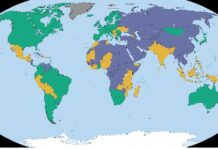There are a lot of online & offline galleries that guarantee an original art for sale, but not everyone is genuine.
The last thing that you want as an art lover is purchasing some painting that comes out as a bogus piece instead of the original.
I am an art aficionado and I totally get the agitation and frustration that come with fake paintings.
To make sure that you do not face a derogatory situation in front of your friends where you are flaunting a fake piece of art you recently bought (That would be so embarrassing), this article is written.
The process of generating imitated copies did not start in recent times. This lousy copying process is in practice for thousands of years.
Copying started because people wanted to pay less for the paintings.
Art admirers that are knowledgeable enough find it not so difficult to pick the fake from the original ones.
Unfortunately, people are still becoming victims of imitated artworks and that is why I am going to provide you with some tips that can avoid you from being conned.
Let’s start:
What kind of surface is used?
The original paintings are usually done on panel, wood, canvas or paper.
It is being observed that the majority of the copied artworks are done on cardboard or stock paper. As an art lover, you should keep a close look on what kind of surface is being utilised the artists.
Ask questions, and try to find why such surface is being picked by the artist. Hardly would you find a fake painting on a canvas.
Keep a close watch
If you are reading this article, it means you love art. But do you have an eye for details when you are observing a painting?
Because it is quite necessary to pin-point the point of distinction between art forms.
For instance, when you look at the oil paintings, you can actually see and feel what kind of texture the paint possesses.
Better, bring a magnifying glass and observe the watercolour painting. See if the impressions from the brush (that are often seen) are present.
This is a sign of original artwork.
It is quite a common to see the overlapping of the colours in the original artwork. Fake paintings are generally clean.
Another way to spot the original art for sale is by noticing the pencil sketches under the watercolour paintings.
It is quite common habit of the artists to sketch the design before painting the same.
Other aspects to be considered
If you get exposed to an artwork that is too smooth, clean, and flat, it is highly probable that you are looking at a fake copy.
In addition to this, always dig deep into the artwork to watch the brushstrokes.
Yes, you can identify the fake paintings if you look closely how the brushstrokes are.
For an instance, check the starting and ending point of the brushstroke and see if they match with the theme.
An example would be if you see that the brushstroke in a landscape painting starts from the white clouds and resumes into the blue sky, then it is not an original one.
An artist would end the brushstroke in between to change the colour from white to blue. If the brushstroke seems to continue, the artwork is probably a texturized print.
Some of the imitated forms comprise of a dot matrix design that is a resultant of the photo mechanical copying process.
These patterns are visible when seen from a magnifying glass.
Also, if you find the copyright information on the painting written in small letters, the artwork is surely a lousy one.
Typically, a few of the original art for sale could have labels from exhibitions or galleries. Look for the artist’s signature, name, and title on the back of the painting. These are generally signs that the artwork is original and authentic.
Final Takeaway
Follow the above-mentioned tips and you would never misinterpret a copied painting from a fake one. For further query, reach us in the comment section. Thanks!
























































